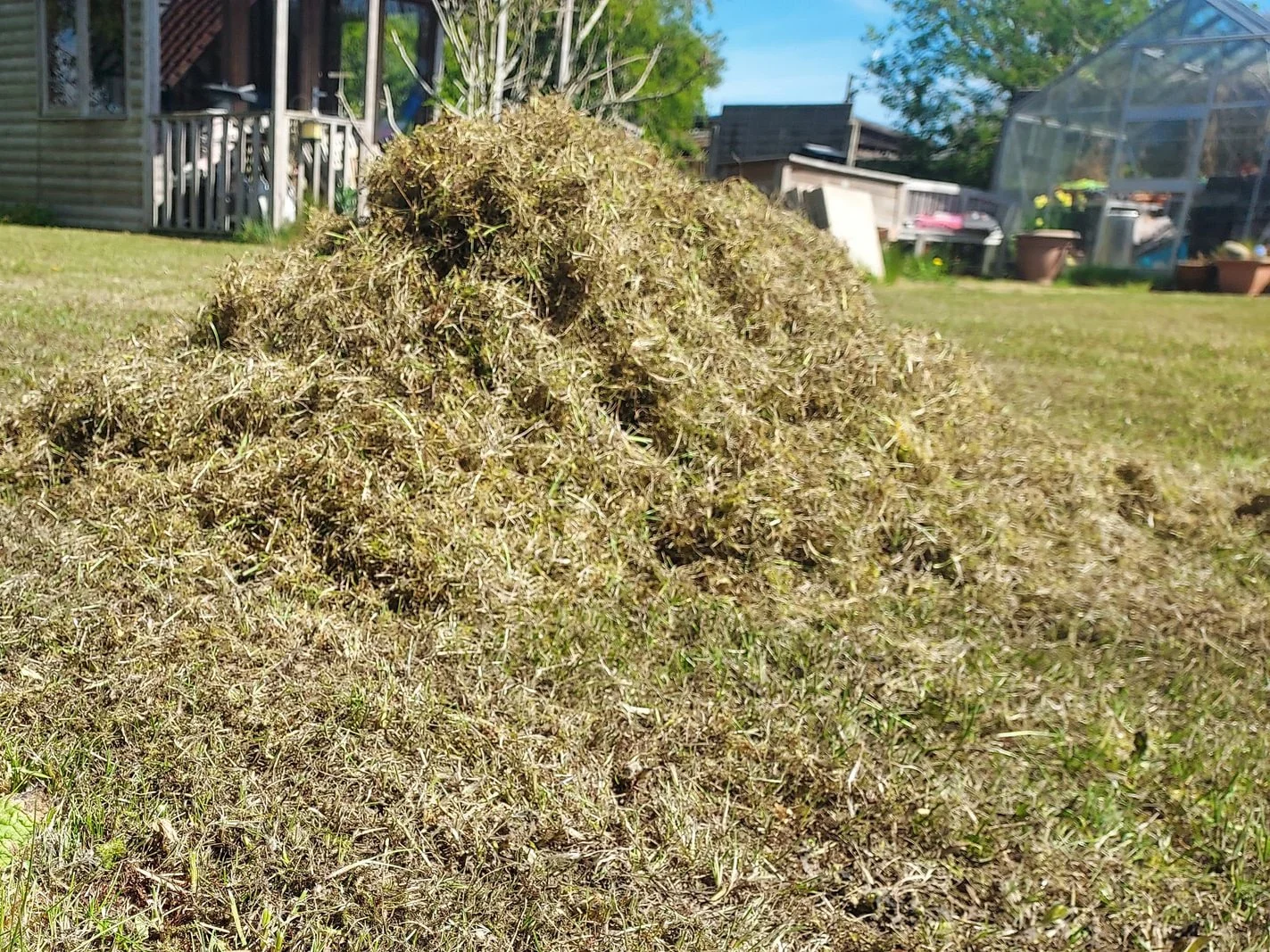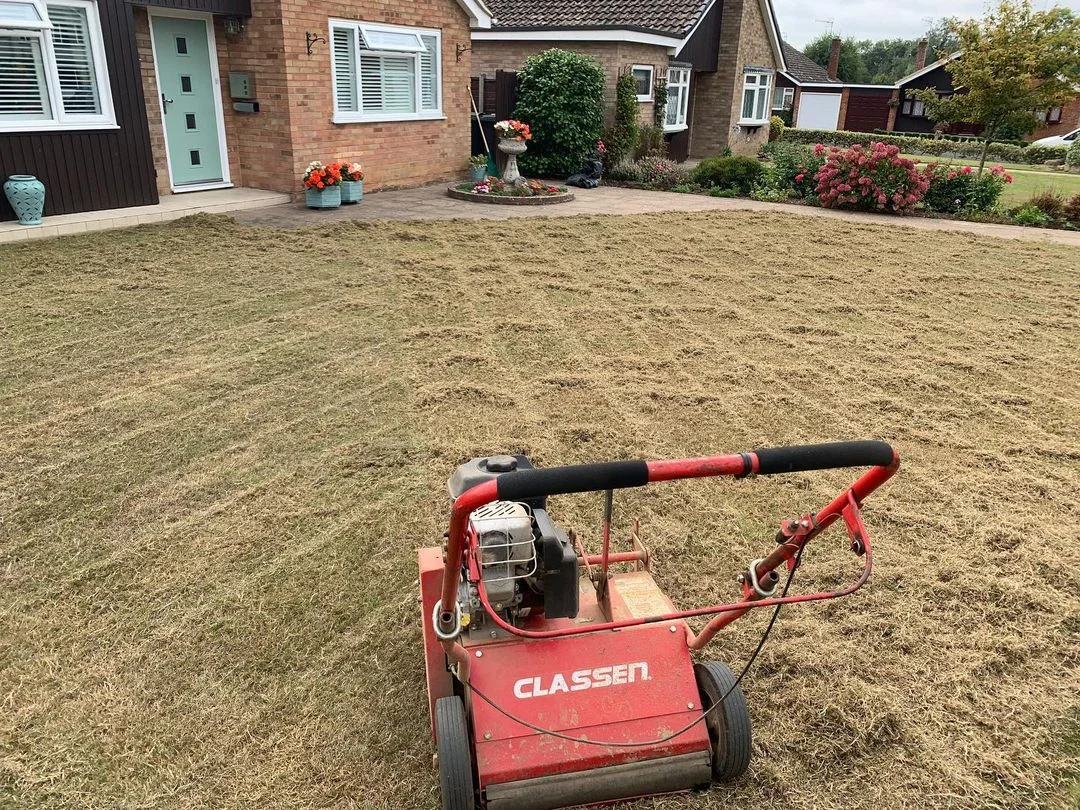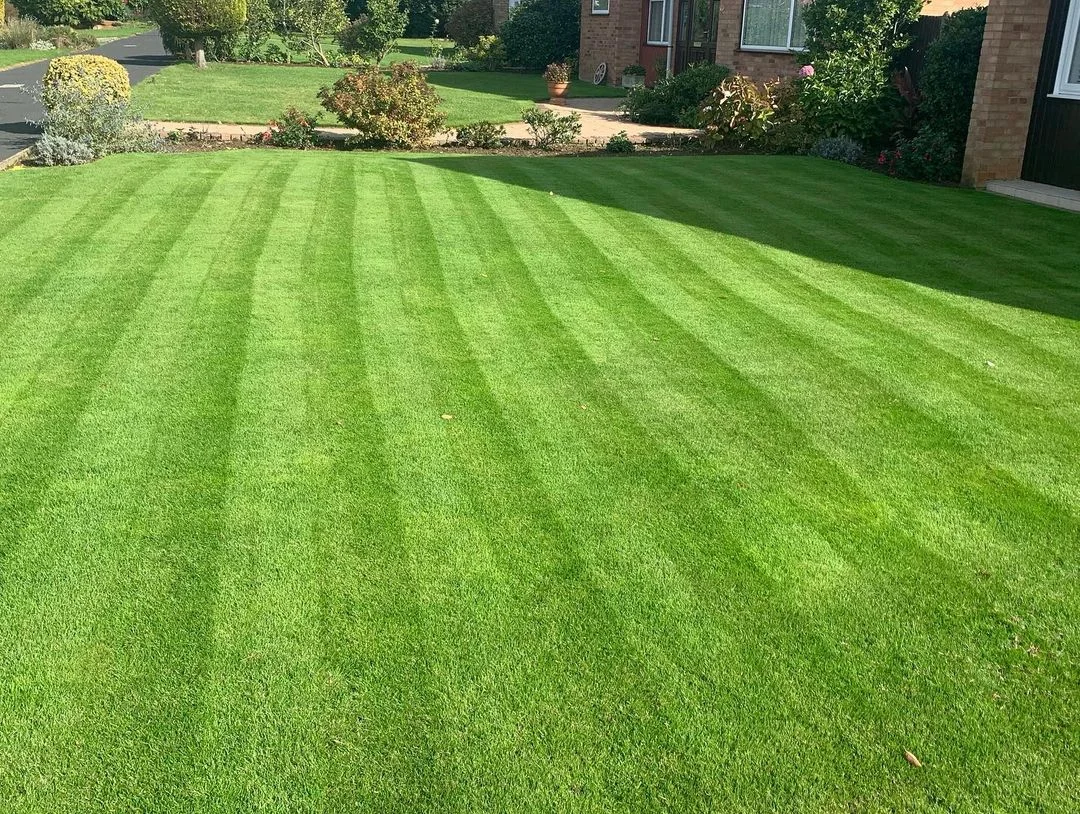Thatch
Last Updated: 16/05/2025
Excessive lawn thatch is very common in lawns that have not had regular maintenance. Thatch is a loose, intermingled organic layer of dead shoots, stems, and roots that develops between the zone of green vegetation and the soil surface.
Thatch build up begins when turf produces organic debris faster than it can be broken down.
The thatch forms like a thick matting layer, making the lawn feel spongy when it is walked on. When it is excessive, thatch stops the lawn from getting all of the nutrients that it needs to remain healthy. Fine grass lawns that consist of fescues and bents tend to build up more thatch than ryegrasses do, because of their growing nature.
Moss is also is very common in lawns that have not had regular maintenance. It is important to reduce moss levels as well as thatch, as dead moss turns into thatch. Regular moss control applications also help reduce thatch levels.
Scarification
Regular scarification should be completed in order to reduce thatch levels and moss build-up. This will help to improve access to the root-zone for nutrients, helping lawns recover to their peak condition.
When to Scarify Your Lawn
Spring time onwards is the best time to have your lawn scarified as the lawn will recover much more quickly when it starts to grow. Autumn is also acceptable as the lawn will still grow at a quick enough rate to fully recover.
Jan |
Feb |
Mar |
Apr |
May |
Jun |
Jul |
Aug |
Sep |
Oct |
Nov |
Dec |
|
|
|
|
|
|
|
|
|
|
|
|
Learn more about scarification here.
Written by Josh Lester, Lawn Care Operative & Lawn Master Franchise Owner
View Profile
Josh is a qualified turf professional with over 25 years of experience. Before joining Lawn Master, Josh worked as Head Greenkeeper at numerous golf courses, including Insch Golf Club and Longside Golf Club. Josh is based in Moray and offers lawn care services in Moray & North Aberdeenshire.






